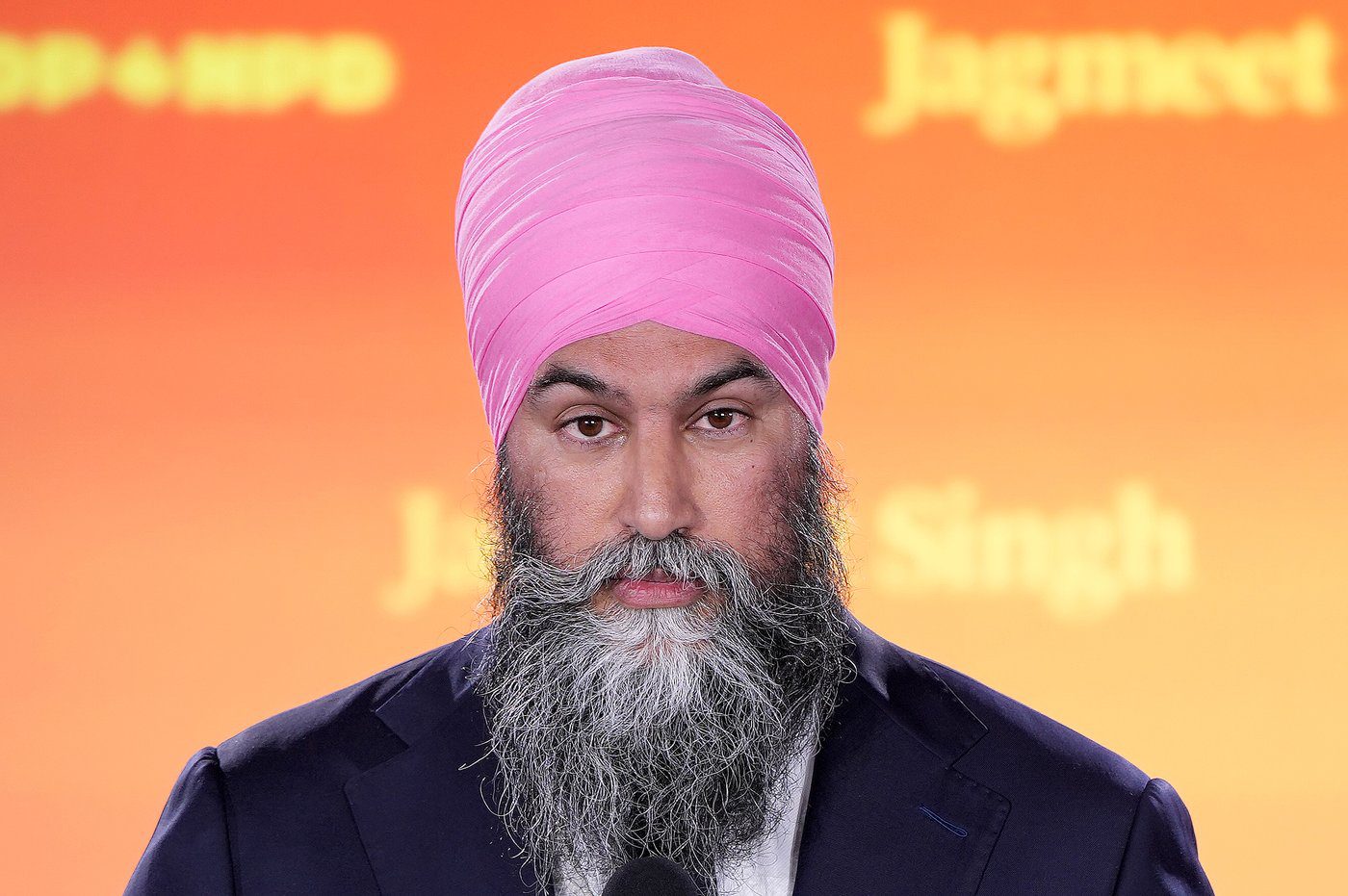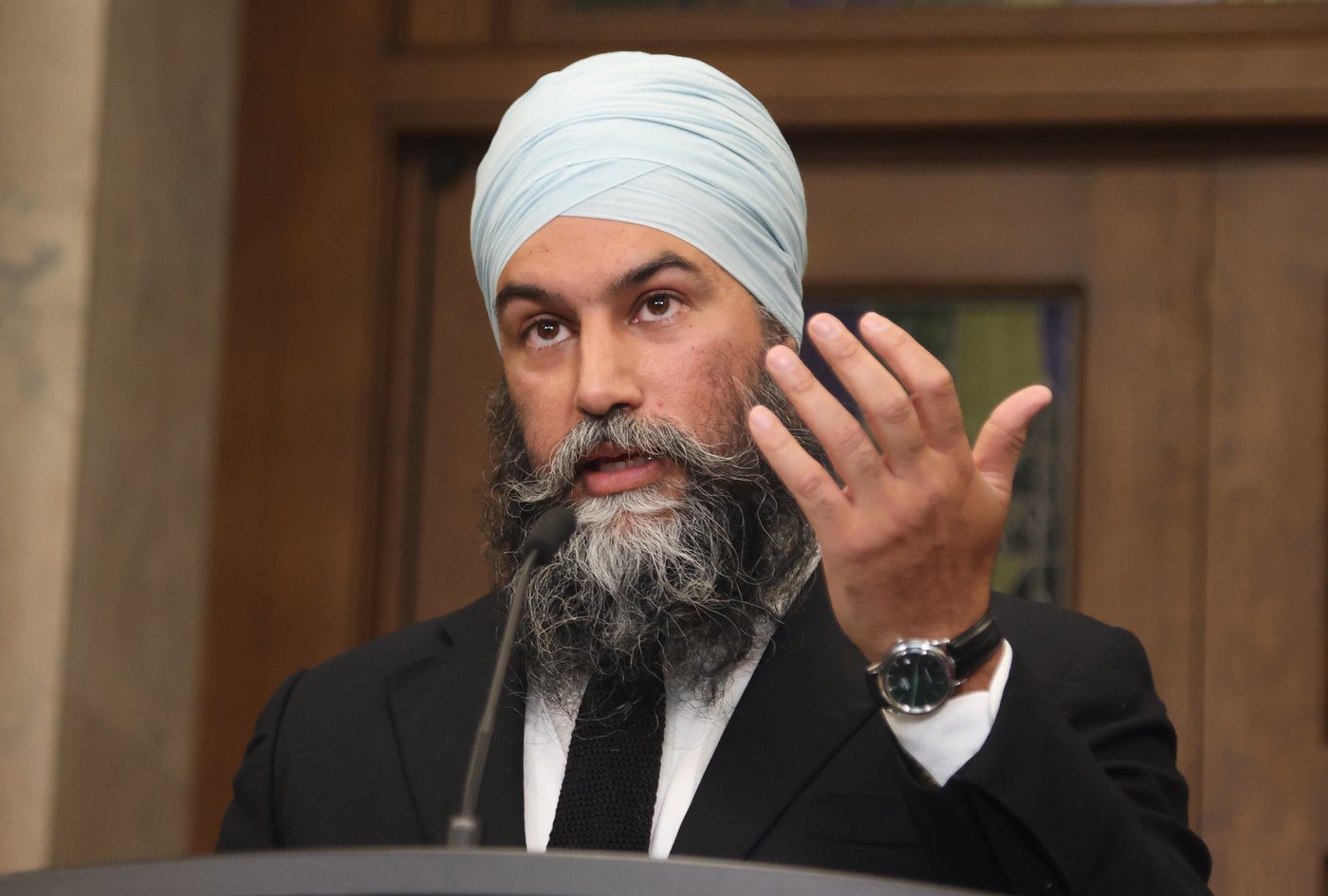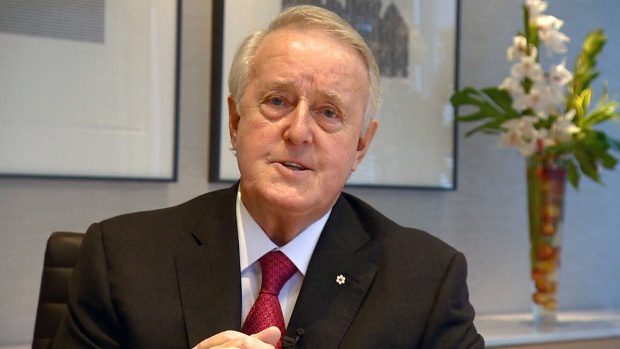This content is restricted to subscribers

The views, opinions and positions expressed by columnists and contributors are the author’s alone. They do not inherently or expressly reflect the views, opinions and/or positions of our publication.

This content is restricted to subscribers
The views, opinions and positions expressed by columnists and contributors are the author’s alone. They do not inherently or expressly reflect the views, opinions and/or positions of our publication.

This week, David Moscrop took a look at the state of the NDP for The Walrus and wondered if perhaps Jagmeet Singh’s time is up, and that after the next election the party should start looking for a new leader because of how marginalized the party has become under his stewardship. It’s a good piece and well worth reading, but there are a few holes in the narrative that I think need a bit more exploration to show how the party got to the state it’s in today, after their all-time high of winning 103 seats and forming the Official Opposition in 2011. There are a lot of things that happened during those years that are instructive as to why the party remains stuck at a rump fourth-place result, with more than a quarter of its sitting MPs opting to either not run again or resign early.
One of the things the piece doesn’t really go into is the failure by the party to consolidate any of its gains in 2011. In fact, a certain arrogance settled into the NDP almost immediately, as they kicked long-time Liberals out of their offices in Centre Block, and generally behaved in a manner that lacked any of the kind of graciousness that generally follows an election when MPs shuffle around offices. Question Period temporarily became a back-patting exercise where the Conservative government and NDP opposition congratulated one another for essentially creating a two-party system with “real differences” that could be debated, rather than the mushy-middle Liberals, who were thought to be facing extinction, and where the Elder Pundits declared that they must merge with the NDP if there was to ever be a chance of defeating Stephen Harper and the Conservatives ever again. Of course, that wasn’t true then and it isn’t true now (as some people are already starting the “merger” calls yet again).
What happened in 2011 was something of a fluke, because Quebec as a whole decided to vote emotionally for “Le Bon Jack,” as Jack Layton was touring with his cane, and insisting that he had beaten cancer (when it turns out he hadn’t, and questions remain as to just what he knew about his condition at the time, which his family studiously avoided ever explaining after he died). Prior to that, most of the riding associations in the province existed on paper only, and they had absolutely no grassroots depth. A lot of candidates were only ever paper candidates who signed up to put their name on a ballot for the sheer sake of the party running candidates in every riding so that they could maximize their advertising spend under Elections Canada rules. They never stood for nomination (in spite of the party insisting that they always run open nominations in every riding), and a number of them had never even visited their riding until after they’d won. And yet, they did not feel the need to actually do the work on the ground once they had been elected. Riding associations remained largely on paper, and no real attempt was made to actually build grassroots organizations (though they did feel they needed to stand up a provincial wing of the party, which never really did get off the ground). If anything, the party’s central leadership was being even more rigidly command-and-control as they cooked up the “satellite office” scheme, where MPs had to turn over a portion of their office budgets for these “satellite offices” in the province, which turned out to be contrary to the rules, and why MP Lise St-Denis crossed over to the Liberals when she didn’t want to have any part of it (or the bullying that surrounded the demands).
The other lesson from Thomas Mulcair’s leadership was not just that he tried to move the party further to the centre by dropping references to “socialism” in the party’s constitution, or that he was essentially pledging the same sort of austerity that Stephen Harper was offering, but rather that there was a reluctance to do the actual work. It soon became apparent in the House of Commons that as an opposition party, the NDP were pretty weak and had to rely heavily on staff from the leader’s office to do a lot of the work for them, and as a result, they never developed much in the way of bench strength while they had the opportunity. It was no surprise that their seat count dropped from 103 to 59, with nearly all of their Quebec seats falling away to the Liberals and a resurgent Bloc that had managed to sort out its own leadership woes, and Mulcair tried to coast on his three good days in Question Period during the ClusterDuff that didn’t translate to an ability to perform in the leadership debates.
The lack of desire to do the work has been a hallmark of Singh’s entire leadership, starting from the fact that he couldn’t be bothered to even seek a seat for at least the first year of his leadership before it became clear to him that he had become a non-entity in the media and needed to be visible in the House of Commons. But even before that, there seemed to be this expectation on the part of the party that because he was younger and more progressive than Justin Trudeau, that somehow the progressive voters among the Liberals would just switch over to him because he was so attractive and charming, as though that was all it was going to take.
Meanwhile, since the start of COVID, the party has mostly just been patting themselves on the back for pushing on an open door, whether it was extending pandemic benefits that the Liberals were never going to cut short, or the Supply-and-Confidence Agreement that allows the NDP to try and take credit for things they have done absolutely none of the work to achieve, while Singh tries to play both sides and still talk smack about Trudeau while he votes to prop him up on every occasion. Along the way, they’ve allowed the Conservatives to swoop in and take on their blue-collar base while Singh and the party cater to increasingly niche urban progressive narratives that have a tendency to be alienating to those blue-collar workers who used to vote for the party in a number of regions.
It’s not just the lack of a strategic vision that Moscrop points to, or their failing attempts to recapture the narrative of class politics. It’s the actual grassroots work on the ground that the party can’t get their heads around, which manifests itself in how their ground game has collapsed in successive elections as the Liberals outpaced them. Singh is a problem for the party, but he is only part of the problem, and they need to have a look in the mirror and see the deeper cultural malaise in the organization if they want to have any hope of making future gains.
The views, opinions and positions expressed by columnists and contributors are the author’s alone. They do not inherently or expressly reflect the views, opinions and/or positions of our publication.

This content is restricted to subscribers
The views, opinions and positions expressed by columnists and contributors are the author’s alone. They do not inherently or expressly reflect the views, opinions and/or positions of our publication.

Recent federal polling might remind those with long political memories of the January 23, 2006 election, that first brought Stephen Harper’s Conservative Party of Canada to power in Ottawa.
To indulge briefly in a few too many numbers, take the January 22, 2023 update for the 338Canada opinion poll projections.
In a 338-seat Canadian House of Commons it gives Pierre Poilievre’s Conservatives 152 seats with 35% of the Canada-wide popular vote. The Trudeau Liberals are assigned 129 seats with 30% of the vote. (In the minor but still numerically important leagues the New Democrats are given 25 seats with 21%. And the Bloc Québécois has 30 with 7%.)
Going back almost exactly 17 years to the real-world Canadian federal election on January 23, 2006 (with a 308-seat House) the Harper Conservatives won 124 seats with 36% of the popular vote. The Liberals took 103 seats with 30%. (The New Democrats here won 29 seats with 18% and the Bloc 51 with 11%.)
In both cases — the real-world 2006 and the polling-based 2023 — Conservatives won the most seats, but not enough for a majority government.
In 2006 a bare majority was 155 seats (170 in 2023) : Stephen Harper’s party had only 124. And the consequences 17 years ago arguably haunt the prospects for a federal election in 2023.
The January 23, 2006 “snap election” became inevitable when Jack Layton’s New Democrats finally joined the Conservatives and the Bloc Québécois in seeking the end of Paul Martin’s Liberal minority government, in late November 2005.
Yet New Democrats could not be expected to keep a Stephen Harper Conservative minority government in office. (And in any case in 2006 Conservative and NDP seats combined were still not quite enough for even a bare majority.)
The Liberals could similarly hardly prop up a Conservative minority government. The reality of the House bequeathed by the Canadian people in late January 2006 inevitably pointed the Harper Conservatives towards Gilles Duceppe’s Bloc Québécois.
Prime Minister Stephen Harper, the consummate political strategist, may have been more prepared to work with M. Duceppe than some of his fellow Conservative MPs.
There was also nothing between Conservatives and Bloquistes in 2006 (or later) remotely like the formal supply and confidence agreement between Liberals and New Democrats in 2023.
Stephen Harper, however, did work with Gilles Duceppe after the 2006 election. The zenith of the resulting symbiosis arguably came on November 27, 2006, when the Canadian House of Commons voted on a motion advanced by Prime Minister Harper.
The motion read: “That this House recognize that the Québécois form a nation within a united Canada.” It passed by an overwhelming majority of 266 to 16.
Going back (or ahead) to the January 22, 2023 update for the 338Canada opinion poll projections, if a Canadian federal election were held today, the Conservatives would once again win the most seats but not enough for a majority government.
As back in 2006, neither Liberals nor New Democrats could realistically be expected to support a Poilievre Conservative minority government. Once again to remain in office any length of time the Conservatives would have to work with the Bloc (now led by Yves-François Blanchet).
What price, some might ask, would the Bloc demand this time? What further motion on the Québécois nation in a united Canada might loom in the Ottawa political air? And would this be a good thing? (As the November 2006 motion arguably enough was — and still is today!)
Questions of this sort may have lingered at the back of some minds during Pierre Poilievre’s recent Quebec tour.
As for Jagmeet Singh’s pulling the plug on the Justin Trudeau Liberals, as Jack Layton did in 2006, the New Democrats are at a healthy 21% of the popular vote in the latest 338Canada projection (compared with 18% in 2006). The March 2022 Liberal-NDP supply and confidence agreement is arguably working for the NDP.
Moreover, for the Canadian people at large the Liberals and New Democrats together, even on 338Canada’s latest Conservative friendly numbers, also have a 51% majority of the Canadian popular vote — as well as a majority of seats bequeathed by the latest 2021 federal election.
Diverse observers who do remember 2006 in Canadian federal politics might see several good reasons why it should not and in any case cannot quite be repeated (or even rhymed) in 2023.
The views, opinions and positions expressed by columnists and contributors are the author’s alone. They do not inherently or expressly reflect the views, opinions and/or positions of our publication.

Become a subscriber today!
Register